
|
We usually don't pay much attention to fungi and mushrooms, and yet they are more more wide spread - and much more important - than we give them credit for. Since the 1940s, fungi have been used for the production of antibiotics, and, more recently, various enzymes produced by fungi are used industrially and in detergents. Fungi are also used as biological pesticides to control weeds, plant diseases and insect pests. So lets learn about some fascinating and bizarre looking fungi and mushrooms! |
| Blue Milk Mushroom (Lactarius indigo) |
 |
|
Lactarius indigo, commonly known as the indigo milk cap, the indigo (or blue) Lactarius, or the blue milk mushroom, is a species of agaric fungus in the family Russulaceae. A widely distributed species, it grows naturally in eastern North America, East Asia, and Central America; it has also been reported from southern France.
The milk, or latex, that oozes when the mushroom tissue is cut or broken—a feature common to all members of the Lactarius genus—is also indigo blue, but slowly turns green upon exposure to air. The cap is typically between 5 to 15 cm (2 to 6 in) broad, and the stem 2 to 8 cm (0.8 to 3 in) tall by 1 to 2.5 cm (0.4 to 1.0 in) thick. It is an edible mushroom, and is sold in rural markets in Mexico, Guatemala, and China. |
| Bitter Oyster (Panellus stipticus) |
 |
|
Panellus stipticus, commonly known as the bitter oyster, the astringent panus, the luminescent panellus, or the stiptic fungus, is a species of fungus in the family Mycenaceae, and the type species of the genus Panellus. A common and widely distributed species, it is found in Asia, Australasia, Europe, and North America, where it grows in groups or dense overlapping clusters on the logs, stumps, and trunks of deciduous trees, especially beech, oak, and birch. Panellus stipticus is one of several dozen species of fungi that are bioluminescent. Strains from eastern North America are typically bioluminescent, but those from the Pacific regions of North America and from other continents are not. The luminescence is localized to the edges of the gills and the junction of the gills with the stem and cap. |
|
|
| Golden Jelly Fungus (Tremella mesenterica) |
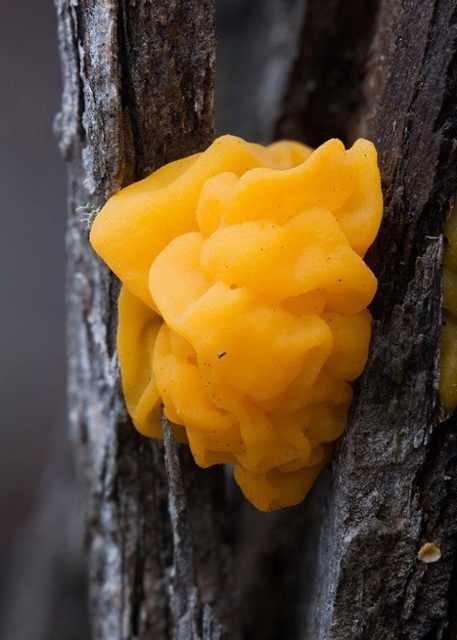 |
|
remella mesenterica (common names include the yellow brain, the golden jelly fungus, the yellow trembler, and witches’ butter) is a common jelly fungus in the Tremellaceae family of the Agaricomycotina. It is most frequently found on dead but attached and on recently fallen branches, especially of angiosperms, as a parasite of wood decay fungi in the genus Peniophora. The gelatinous, orange-yellow fruit body of the fungus, which can grow up to 7.5 cm (3.0 in) diameter, has a convoluted or lobed surface that is greasy or slimy when damp. It grows in crevices in bark, appearing during rainy weather. Within a few days after rain it dries into a thin film or shriveled mass capable of reviving after subsequent rain. This fungus occurs widely in broadleaf and mixed forests and is widely distributed in temperate and tropical regions that include Africa, Asia, Australia, Europe, North and South America. Although considered bland and flavorless, the fungus is edible. |
|
|
| The Wrinkled Peach (Rhodotus palmatus) |
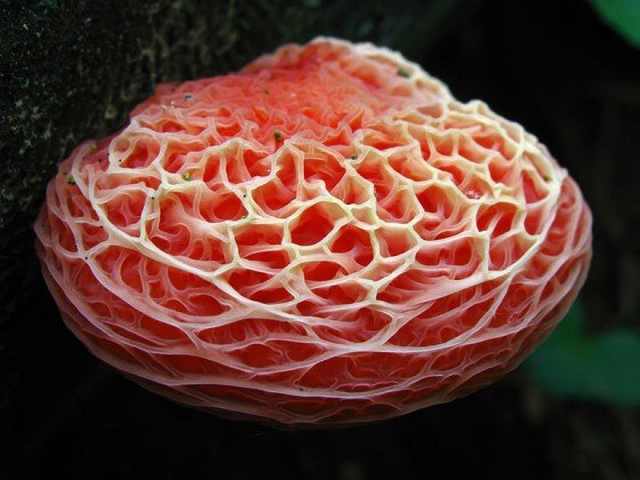 |
|
Rhodotus is a genus in the Physalacriaceae family of fungi. It is a monotypic genus and consists of the single mushroom species Rhodotus palmatus, known in the vernacular as the netted Rhodotus, the rosy veincap, or the wrinkled peach. This uncommon species has a circumboreal distribution, and has been collected in eastern North America, northern Africa, Europe, and Asia; declining populations in Europe have led to its appearance in over half of the European fungal Red Lists of threatened species. Typically found growing on the stumps and logs of rotting hardwoods, mature specimens may usually be identified by the pinkish color and the distinctive ridged and veined surface of their rubbery caps; variations in the color and quantity of light received during development lead to variations in the size, shape, and cap color of fruit bodies. |
|
|
| Violet Coral (Clavaria zollingeri) |
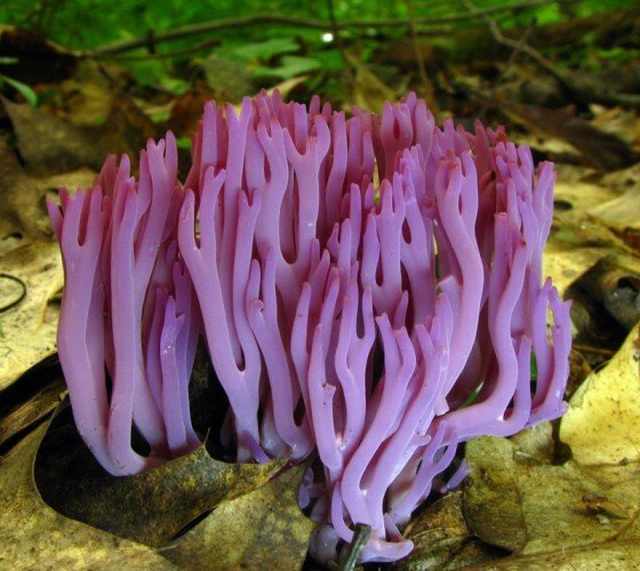 |
| Clavaria zollingeri, commonly known as the violet coral or the magenta coral, is a widely distributed species of fungus. It produces striking tubular, purple to pinkish-violet fruit bodies that grow up to 10 cm (3.9 in) tall and 7 cm (2.8 in) wide. The extreme tips of the fragile, slender branches are usually rounded and brownish. A typical member of the clavarioid or club fungi, Clavaria zollingeri is saprobic, and so derives nutrients by breaking down organic matter. The fruit bodies are typically found growing on the ground in woodland litter, or in grasslands. |
|
|
| Rounded Earthstar (Geastrum saccatum) |
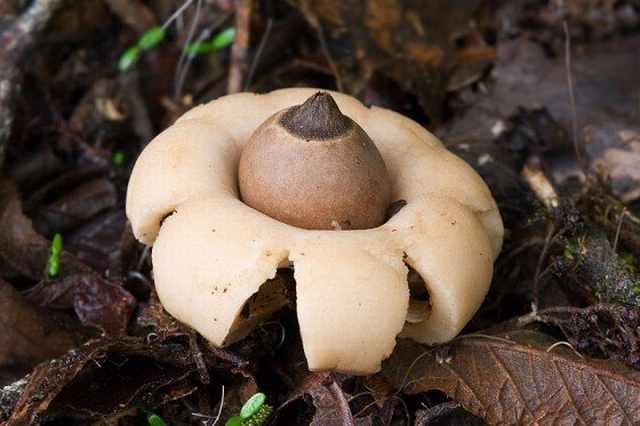 |
|
Geastrum saccatum, commonly known as the rounded earthstar, is a species of mushroom belonging in the Geastrum genus. It is found in North America and Europe and is found growing on rotting wood. It is considered inedible by mushroomers, because of its bitter taste. It is a common mushroom, but collections are at their peak during late summer. The opening of the outer layer of the fruiting body in the characteristic star shape is thought to be due to a buildup of calcium oxalate crystals immediately prior to dehiscence. G. saccatum is distinguished from other earthstars by the distinct circular ridge or depression surrounding the central pore. In Brazil, its common name translates to “star of the land”. |
|
|
| Drayd’s Saddle (Polyporus squamosus) |
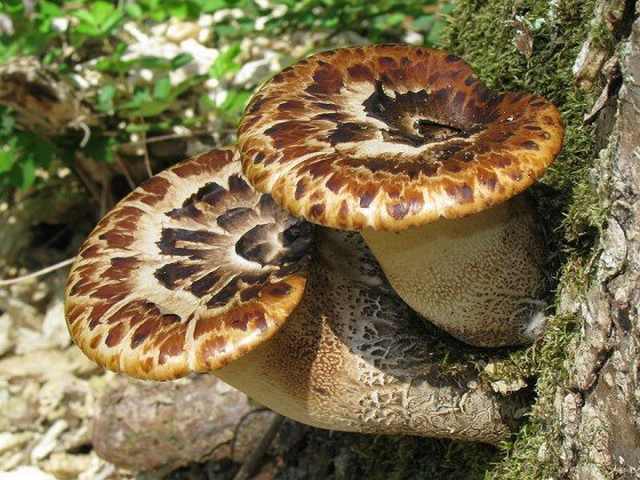 |
| Polyporus squamosus is an basidiomycete bracket fungus, with common names including Dryad’s saddle and Pheasant’s back mushroom.[2] It has a widespread distribution, being found in North America, Australia, Asia, and Europe, where it causes a white rot in the heartwood of living and dead hardwood trees. The name “Dryad’s saddle” refers to creatures in Greek mythology called Dryads who could conceivably fit and ride on this mushroom, whereas the pheasant’s back analogy derives from the pattern of colors on the bracket matching that of a pheasant’s back. |
|
|
| Anemone Stinkhorn (Aseroe rubra) |
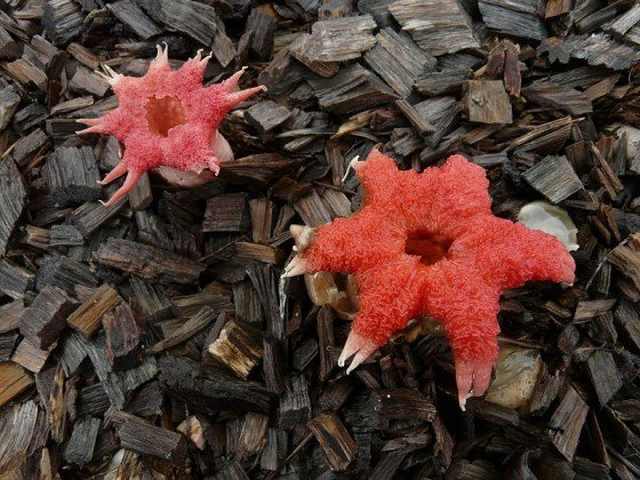 |
| Aseroe rubra, commonly known as the anemone stinkhorn, sea anemone fungus and starfish fungus, is a common and widespread basidiomycete fungus recognizable for its foul odour of carrion and its sea anemone shape when mature. Found in gardens on mulch and in grassy areas, it resembles a red star-shaped structure covered in brownish slime on a white stalk. It attracts flies, which spread its spores. |
|
|
| Coral Fungi (Clavulinopsis corallinorosacea) |
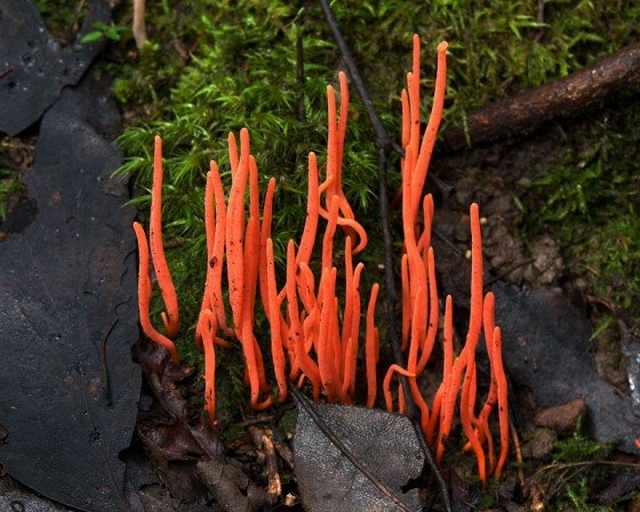 |
| The Clavariaceae are a family of fungi in the Agaricales order of mushrooms. The family contains 7 genera and 120 species. Collectively, they are commonly known as coral fungi due to their resemblance to aquatic coral, although other vernacular names including antler fungi, finger fungi, worm mold, and spaghetti mushroom are sometimes used for similar reasons. Coral fungi can be similar in appearance to jelly fungi. They are often brightly colored, mostly oranges, yellows, or reds, and usually grow in older mature forests. Some coral fungi are saprotrophic on decaying wood, while others are commensal or even parasitic. |
|
|
| Umber-Brown Puffball (Lycoperdon umbrinum) |
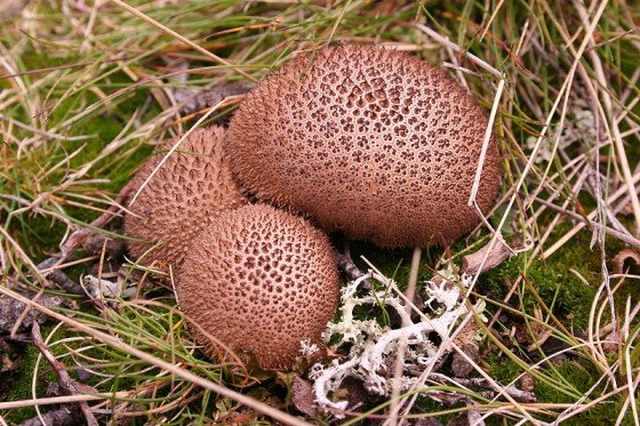 |
| Lycoperdon umbrinum, commonly known as the umber-brown puffball, is a type of Puffball mushroom in the genus Lycoperdon. It is found in China, Europe, and North America. The distinguishing feature of all puffballs is that they do not have an open cap with spore-bearing gills. Instead, spores are produced internally, in a spheroidal fruiting body called a gasterothecium (gasteroid (‘stomach-like’) basidiocarp). As the spores mature, they form a mass called a gleba in the centre of the fruiting body that is often of a distinctive color and texture. |
|
|
| Caesar’s Mushroom (Amanita caesarea) |
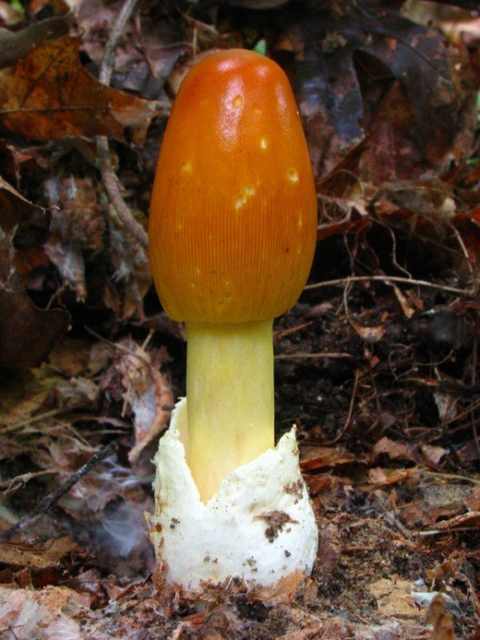 |
| Amanita caesarea, commonly known in English as Caesar’s Mushroom, is a highly regarded edible mushroom in the genus Amanita, native to southern Europe and North Africa. This mushroom was first described by Giovanni Antonio Scopoli in 1772. This mushroom was a favorite of early rulers of the Roman Empire. It has a distinctive orange cap, yellow gills and stem. Organic acids have been isolated from this species. Similar orange-capped species occur in North America and India. It was known to and valued by the Ancient Romans, who called it Boletus, a name now applied to a very different type of fungus. |
|
|
| Pixie’s Parasol (Mycena interrupta) |
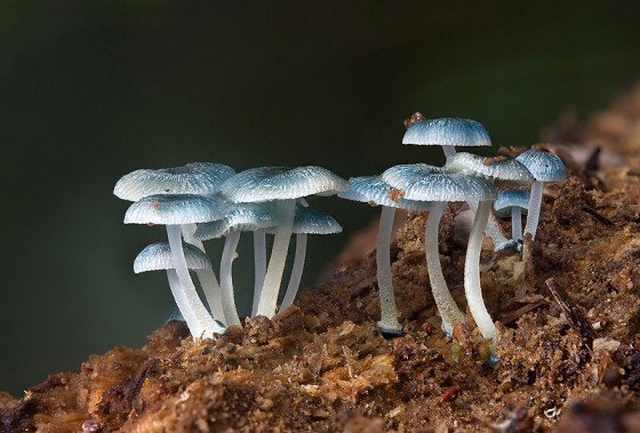 |
| Mycena interrupta, commonly known as the pixie’s parasol, is a species of mushroom. It has a Gondwanan distribution pattern, being found in Australia, New Zealand, New Caledonia and Chile. In Australia it is found in Victoria, Tasmania, New South Wales, and South Australia, and in Queensland where its distribution is limited to Lamington National Park. The caps of Mycena interrupta range from 0.6 to 2 cm, and they are a brilliant cyan blue colour. They are globose when emergent and then become a broad convex as they mature, with the centre of the cap slightly depressed. The caps are often sticky and appear slimy looking, particularly in moist weather. |
|
|
| Elegant Sunburst Lichen (Xanthoria elegans) |
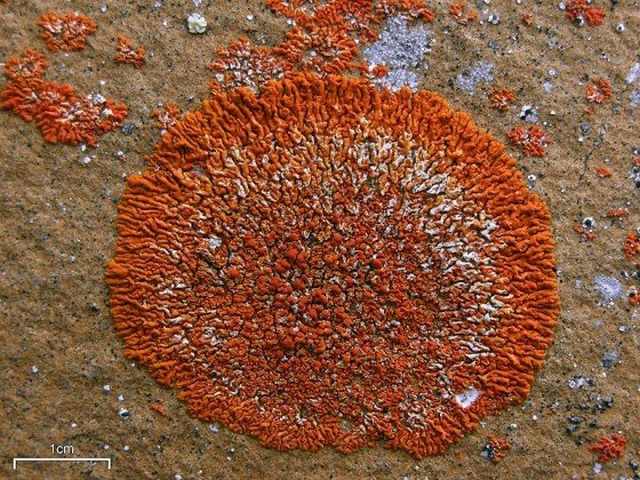 |
| Xanthoria elegans, commonly known as the elegant sunburst lichen, is a lichenized species of fungus in the genus Xanthoria, family Teloschistaceae. Recognized by its bright orange or red pigmentation, this species grows on rocks, often near bird or rodent perches. It has a circumpolar and alpine distribution. It was one of the first lichens to be used for the rock-face dating method known as lichenometry, a technique of estimating the age of rock faces by measuring the diameter of the lichen thalli growing on them. After an initial period of one or two decades to establish growth (the ecesis interval), X. elegans grows at a rate of 0.5 mm per year for the first century, before slowing down somewhat. |
|
|
| The Black Morel (Morchella conica) |
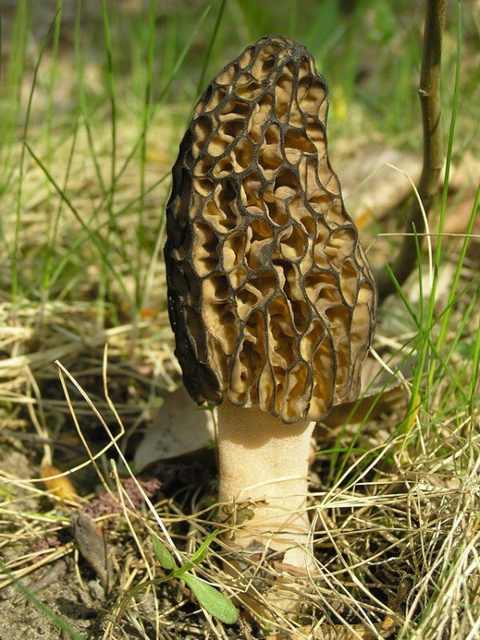 |
| Morchella conica is a species of fungus in the Morchellaceae family. It is one of three related species commonly known as the black morel. Morchella, the true morels, is a genus of edible mushrooms closely related to anatomically simpler cup fungi. These distinctive mushrooms appear honeycomb-like in that the upper portion is composed of a network of ridges with pits between them. The ascocarps are prized by gourmet cooks, particularly for French cuisine. Commercial value aside, morels are hunted by thousands of people every year simply for their taste and the joy of the hunt. |
|
|
| Fly Agaric (Amanita muscaria) |
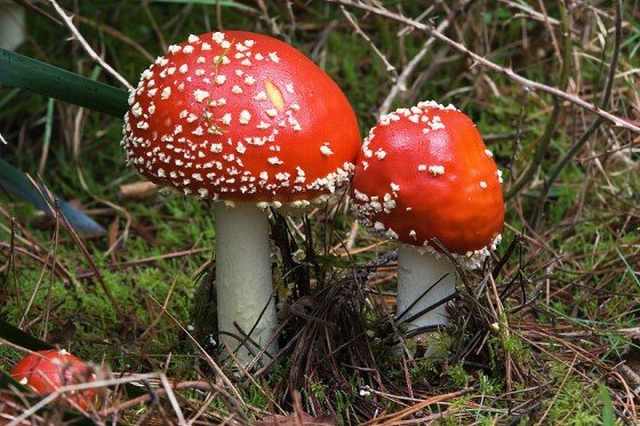 |
|
Manita muscaria, commonly known as the fly agaric or fly amanita, is a poisonous and psychoactive basidiomycete fungus, one of many in the genus Amanita. Native throughout the temperate and boreal regions of the Northern Hemisphere.
The quintessential toadstool, it is a large white-gilled, white-spotted, usually red mushroom, one of the most recognisable and widely encountered in popular culture. Although it is generally considered poisonous, there are no documented human deaths from its consumption, and it is eaten as a food in parts of Europe, Asia, and North America after parboiling. Amanita muscaria is noted for its hallucinogenic properties, with its main psychoactive constituent being the compound muscimol. It was used as an intoxicant and entheogen by the peoples of Siberia, and has a religious significance in these cultures. |